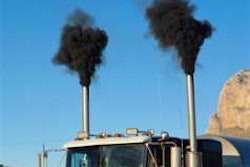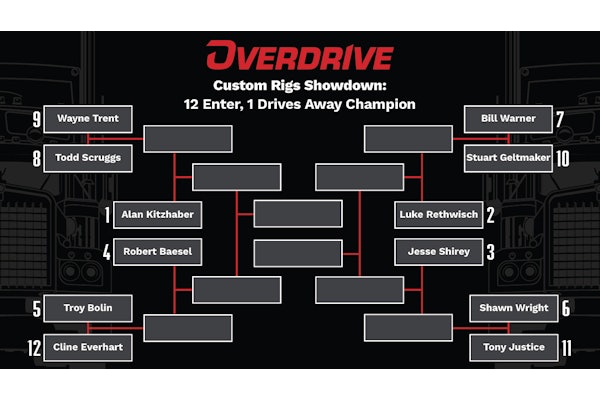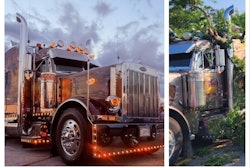Two truckers serve as informal ambassadors for the industry to the worldwide geocaching community
Since 2000, when President Clinton “signed the bill that took the scrambling off the [global positioning] satellites,” says Werner driver D.J. Christie, “making them more accurate” for non-military users, geocaching emerged and has become a fully realized popular pursuit. The activity or “sport,” if you will – “If NASCAR’s a sport, geocaching’s a sport,” Christie insists – is a sort of treasure hunt with GPS units as tools.
Its popularity has led to a connection to a worldwide community for thousands of practitioners, including the Powers Lake, Wis., resident Christie and his driving partner, Frank Williams. They’re proprietors of the GeoTruckers.com site, serving the resource needs of geocaching drivers of large vehicles.
If you’re unfamiliar with geocaching, see our story on p. 32 of this issue. Essentially, geocachers have gotten the permission of property owners to place caches, typically waterproof containers of some sort, somewhere on a piece of property. They log the GPS coordinates of the item, then give a discretionary number of clues as to its location on websites such as Geocaching.com. With each cache, in addition to treasures of various sorts, is usually a log book for those who come along and find it to sign.

Since Christie and Williams (“TwoTruckers” on Geocaching.com) launched GeoTruckers in October 2006, the site has garnered more than 600 members, and the listed caches accessible by trucks number close to 2,500. Bookmarked caches are available in files downloadable to your GPS receiver if it has paperless geocaching capability. In the Garmin StreetPilot that he and Williams use for navigation in their Werner company truck, Christie has his to-find cache list programmed in. “I’ve got them put in as points of interest,” he says. “The unit will actually start chiming telling me there’s a point of interest nearby.”
As we talked in April, he happened to be along I-80 in Illinois headed toward the Quad Cities – the nearest cache was 17 miles back, and when he selected it to demonstrate the audio capabilities of the unit, the cache owner’s clue for seekers rang out: “Look high and low – no, just low, actually. Good luck.”
Geocaching can be lower-tech, for certain – planning a day’s outing just a matter of printing a few pages’ worth of cache information from the web. But Christie and others on the GeoTruckers forums pride themselves on helping newbies with problems. “The members are supportive, especially for people who are just starting out,” Christie says,
giving “technical to practical pointers” on anything from navigating the somewhat new GSAK technology and GPS devices to more artful topics, such as what to consider when placing and naming a cache (Christie and Williams have placed caches in 21 states themselves).
Christie’s father passed away on July 19, 2006, Christie says. “One of our caches in New Mexico is a memorial to him. It’s at a rest area north of Anthony, N.M.,” available to premium members of Geocaching.com. Christie says his father, James Christie Sr., while not as avid a geocacher as he and Williams, at least helped make the activity one for the family, a common thread in most geocachers’ tales of their own acquaintance with the “sport.”
Says Christie, “Now there’s also a James Christie Jr. and a III out there caching.”
POSTED
Internationally speaking A problem was recently highlighted in a conversation I had with Laredo Development Foundation director Roger Creery: getting legislators and security officials to fully appreciate the amount of traffic they’re dealing with along the U.S. southern border. Creery described a visual he tries to put in their minds as they “enact legislation to do things that, seemingly, wouldn’t take that much time,” he said, at a border crossing. For example, “let’s take something as simple as, ‘We’ll look at a driver’s license.’ If that takes one minute per truck, it doesn’t seem like a lot – but if you project that across 12,000 trucks [daily, typical for the Laredo ports of entry], you can add six to seven hours of delay time at the border. So a one-minute decision by legislative mandate can add that delay time. If you’re crossing 1,200 trucks a day rather than 12,000 – not a big deal. But if they’re hauling 53-foot trailers, lined up nose to tail from milemarker one on I-35 [in Laredo], a line of 12,000 trucks would extend all the way up through San Antonio at milemarker 170” – a big potential bottleneck indeed.












